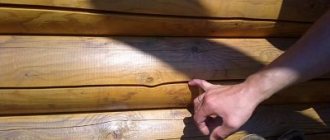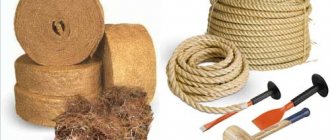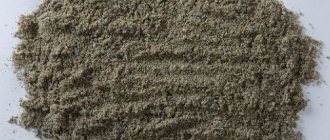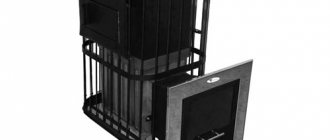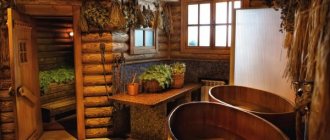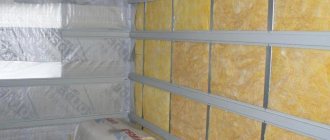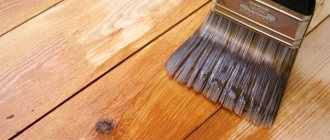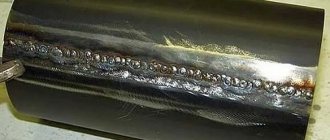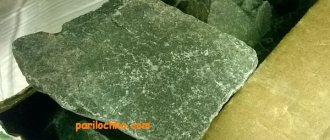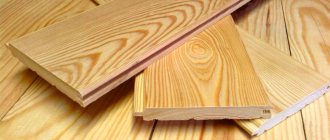Without power supply, the bathhouse building will not be able to function normally. Switches, lamps, sockets, heat-resistant cable for the bath are integral parts of the system. Wires for the sauna in each room are selected based on its purpose, different temperature conditions and the presence of moisture.
A network is laid in the steam room to create artificial lighting and connect an electric furnace. In the washroom - for light and a water heater, and in the dressing room - for appliances, for example, a hairdryer, TV or kettle. Let us consider in detail which wire to use for wiring in the bathhouse.
What you need to know about baths and saunas?
As you know, in construction, along with natural wood, an equally common material such as brick is widely used. As for the baths themselves, they can be built using not only timber, but also a frame structure or logs. However, it is the timber that has such characteristics that allow it to be most often used for the construction of such structures. Moreover, baths made from it are very cheap and economical.
To improve the basic characteristics of wooden structures, it is now common to use building materials such as profiled timber. It does not require any caulking or exterior finishing, which is one of its main advantages. Profiled timber has a whole range of excellent properties, thanks to which it acquires extremely high reliability and strength. This is explained by the fact that the middle of the log, which is the basis of the timber, is impregnated with resins during operation and thus becomes much more dense and durable. The material also becomes resistant to rotting, deformation and many other negative external influences. Thanks to all these advantages and positive qualities, timber is the best material for the construction of baths.
When is protection needed at all?
The need to install protective casings and screens does not always arise. If a fire-safe distance is maintained between the stove and the nearest flammable surface, additional protection is not needed. At this distance, the IR rays are scattered, weakened, and the amount of them that the wooden wall receives can no longer lead to damage.
It is believed that the safe distance from the wall to the brick stove (quarter-brick laying) is at least 0.32 m, from the wall to the metal stove (not lined) - at least 1 m. For a metal stove lined from the inside with brick or fireclay, the distance decreases to 0.7 m.
Thus, maintaining fire safety distances is more possible in large baths, where the issue of saving space is not relevant. In family steam rooms, where every centimeter of space counts, installing a stove 0.3-1 m from the nearest walls is impractical. In this case, the safety distances established by the standards must be reduced using screens and casings.
Wires for bath
One of the most important points when building a bathhouse is proper wiring. This is especially true for wooden and frame buildings. All electrical wiring must be done strictly according to the following rules:
- laid in non-flammable boxes, cable ducts or corrugated hoses;
- when connecting wires, the use of twists is not allowed, only through soldering, connectors or contact plates;
- special heat-resistant lamps are used in the steam room;
- Wiring is carried out with flame retardant cable.
The biggest concern in terms of electrical wiring is the steam room. The combination of humidity, temperature, large amounts of wood and electricity is a very fire hazard. That’s why many people try to do without electricity in the steam room and use fiber optic lamps for lighting. Yes, they cost a lot, but they are safe - in the steam room there is only fiberglass, which conducts light, and all the electrical parts are located in “dry” rooms.
In principle, there is no such thing as non-flammable (heat-resistant, heat-resistant) cables. There are cables that are flame retardant and fire resistant. Fire resistant are used in fire extinguishing and fire detection systems. They should remain operational for some time even when exposed to direct fire. They are of no use in the bathhouse.
Flame retardant cables themselves do not burn, but they stop working almost immediately after exposure to open fire or high temperatures - they melt. So they should be used when distributing electricity in baths. The table shows their names.
List of flame retardant cables
For wiring in the bathhouse, VVGng is used. The letters LS added further indicate a small amount of smoke during combustion, which is also not bad and it is advisable to use just such a wire. The diameter is selected depending on the total power of the electrical equipment installed on the line. Typically this is 2.5 mm2.
Protective materials and devices
When choosing protective screens based on sheet blanks for a bath or sauna, the following range of special products offered on the domestic market is taken into account:
- non-combustible asbestos boards;
- steel sheets;
- calcium silicate and other special protective screens, panels, slabs.
According to the requirements of current standards, the need for such non-combustible materials arises only in cases where the distance from the stove to the walls of the bathhouse does not meet fire safety standards. For different types of ovens they vary from 32 cm to one meter.
https://youtube.com/watch?v=rQTXS0Od3A0
Sometimes stoves in modern baths are finished with non-flammable tiles made of ceramic or stone. As for wooden materials for decoration and accessories, they all have low thermal conductivity, therefore, although they are not non-flammable, they heat up weakly. For the construction of baths, wood with anti-perenum impregnation, brick, aerated concrete and other non-combustible material are used.
Asbestos sheet
Asbestos belongs to the category of fire-resistant, non-combustible materials that can withstand prolonged heating without loss of strength up to temperatures of about 450-500 degrees. It can have a variety of designs, including sheet format (in the form of blanks of standardized size).
This material is in particular demand in places that are subject to reliable insulation from high-temperature influences (in rooms with thermal and heating stoves installed in them, in particular in baths).
In addition, special fire-resistant partitions for walls and ceilings in bathhouses, as well as insulation of pipelines and thermal connections, are made from asbestos sheets.
Sheet steel and protective screens
Sheet steel is often used as a protective coating for walls in steam rooms, the condition of which is subject to special requirements.
For these purposes, only high-quality metal that is not damaged by rust, purchased in the form of sheet blanks, should be used.
Often, steel sheets are used in bathhouses and to protect floor coverings directly adjacent to the stove, and are used as material for stands.
Protective non-combustible screens are structures that provide insulation from the side walls of the combustion unit in the bathhouse.
They are made of brick or metal sheets and mounted at a distance of no more than 5 centimeters from the surface of the stove walls. From a practical point of view, non-combustible screen structures made from steel blanks or fire-resistant glass are of greatest interest.
Fire-resistant slabs made on the basis of calcium silicate are considered more modern materials for finishing baths. They are used to insulate the walls of the stove in the bathhouse and exhaust ducts.
Installation recommendations
Not only well-chosen lighting fixtures are important when arranging a bathhouse, but also their correct installation. This issue is especially relevant for steam rooms where operating conditions are difficult. Among the main requirements for organizing lamps are:
- It is prohibited to place lamps near the stove, regardless of their degree of heat resistance;
- It is more expedient to install them on the wall opposite to it;
- you need to calculate the distance from the floor to the chandelier so as not to hit it with your head.
It is best to place lighting fixtures in the corner of the room or where the walls and ceiling intersect.
Rules for installing LED strip in a bathhouse
Before you start working on lighting each room, you need to figure out what type of device is suitable in a particular case. For each room, tapes with specific markings must be selected.
Almost all lighting fixtures of this type have a high level of moisture resistance. But if you plan to use the tape under water, you should opt for certain products that are created specifically for such cases. As for the steam room, it is also worth choosing special equipment for this room. The thing is that ordinary LED strips work normally only at temperatures of -30...+50°C. Higher or lower readings may cause equipment failure.
For a bath, you should choose a heat-resistant LED strip
In the steam room, the temperature can reach +120°C, so you need a special heat-resistant LED strip for the bath that will withstand work in such conditions. It costs a little more than a regular one, but its purchase will be profitable, since the lighting will not have to be constantly changed due to breakdowns.
Installation of the tape itself can occur on any part of the wall, ceiling or floor.
When installing equipment, you need to take into account that such lighting devices do not consume a lot of energy, but require high-quality wiring, like any other lamps
Therefore, even at the stage of building a bathhouse, special attention must be paid to the issue of choosing an electrical cable. Then it must be properly installed and insulated from moisture and high temperature
LED strip saves electricity
Experts recommend installing heat-resistant tapes for baths and saunas so that the switches are located in other rooms. This will reduce the risk of electric shock. It is best if the switches are located in the rest room, where, as a rule, there is no water or excessively high temperatures.
Each lighting fixture requires a power supply. It is also recommended to place it away from temperature extremes and moisture. It must be taken into account that one block is enough to service 5 m of LED strip. Most often, this is the skein that comes with the power supply. It is not worth increasing the length of the tape, as this may damage the lighting device. There must be a cap at the end of each LED strip
Particular attention should be paid to those tapes that will be located in the washing room, steam room and pool. The slightest mistake can lead to serious injuries and even tragedy
LED strip connection diagram
The installation of a heat-resistant and moisture-resistant LED strip in a bathhouse itself is not considered a difficult job. But it needs to be done efficiently and carefully so that the lighting device decorates the room and does not cause trouble. Of all the types of devices that can be used to illuminate a bath, heat-resistant LED strip is considered one of the safest options. This is a good solution for bringing creative ideas to life.
Methods of summing up
Before planning the process of installing electrical wiring in the bathhouse, you need to run a power cable to it. There are only two ways to do this:
- Air;
- Underground.
The advantages of the air method include its low cost and speed of installation. In this case, SIP 4 cable is used.
Important! It is strictly forbidden to use a SIP cable for running through the attic space, therefore VVG or NG cables are used to introduce it into the bathhouse.
In order to secure the cable in the external wall of the bathhouse, it must be placed in a corrugated pipe or plastic box. A box with a circuit breaker is installed at the SIP cable entry point.
Conducting underground is quite difficult and expensive, so in this case they use the VB6Shv cable model. The advantage of this method is that it protects the cable from damage.
It is better to install electrical wiring inside the bathhouse using an open method, since it is safer and more convenient. In this case, the wiring lines are quite easy to view, and there are no difficulties during the replacement or repair process.
Let us consider in more detail the overhead and underground method of connecting the cable to the bathhouse.
Air supply method
Laying a cable through the air is more dangerous than underground, since in this case it will be constantly exposed to tests: weather changes, precipitation, ultraviolet radiation, wind - all this adversely affects the structure of the cable.
In this regard, it must be strong enough and have good protection from all weather vagaries.
In order to run a wire from a house to a bathhouse, the following are usually used:
- Cable without insulating layer;
- SIP cable with an insulating layer.
It is best to opt for the second option, since the SIP is covered with a dense polyethylene layer, which protects it from any influences, and its core is made of aluminum. It is also quite rigid, so it does not require the installation of an additional frame.
So, if you decide to conduct a cable to the bathhouse by air, you should know several rules and requirements for this process:
- The distance from the cable to the roadway must be at least 6 m;
- The distance from the cable to the pedestrian part must be at least 3.5 m;
- In the case where the cable is lowered from a support exceeding 25 meters, it is necessary to install an additional support;
- The minimum height of the wire entry in a bathhouse building is 2-3 m.
SIP4 is usually used as a conductive cable for the overhead installation method, the name of which stands for self-supporting insulating wire. SIP4 does not have a support cable.
The cross-section of the aluminum conductors of the SIP4 cable should be equal to 16 sq. mm. If you plan to carry out two-phase input, then the cable must be two-core. If three-phase - four-wire.
To install a cable using a steel pipe, you must follow these rules:
- In order to prevent moisture from entering the pipe, it is necessary to bend its upper end into a half ring;
- The lower end of the steel pipe must be fixed at an angle of 5-15 degrees, inclined towards the street;
- It is necessary to paint the pipe with high quality, and also make a hole at the very bottom so that the condensate flows out freely;
- The pipe is attached to the wall using clamps, and to the roof using steel braces and bolts.
Underground connection method
The most reliable, but not always appropriate way.
As mentioned earlier, the underground method of connecting the cable to the bathhouse requires quite a lot of material costs. However, it is with this method of installation that the cable is maximally protected from damage and does not require replacement or repair for a long time.
The cable used for underground installation is VBBShV, an armored cable with four copper cores.
The cross-section of all copper conductors is equal to 10 mm2. There is a metal braid between the inner and outer shell, which is why VBBShV is stronger than a SIP cable.
In the process of laying a cable underground, the first step is to dig a trench, the depth of which varies from 0.7 to 1.2 m. Then you need to pour 10 cm of sand at the bottom of the trench and lay the cable on it, which is also covered with sand on top.
Information. In order to provide the cable with maximum protection from mechanical stress, it is recommended to lay a row of bricks on top of the sand.
For vertical cable laying, you can use metal pipes and angles, but this is strictly prohibited when laying the cable horizontally, as it can lead to the formation of condensation.
Installation of electrical wiring and devices
What is the difference between a cable and a wire?
The process of installing electrical wiring and connecting various devices includes several stages:
- Drawing up a project - a graphic plan for the placement of wiring, sockets, lighting fixtures, distribution board, electric furnace, water heater;
- Calculation and purchase of the required amount of wiring, sockets, lighting fixtures, protective devices (RCDs) or automatic circuit breakers;
- Laying a power input cable into the bath;
- Installation of a distribution panel, installation of an input circuit breaker, RCD and circuit breakers for various groups of electrical appliances (sockets, lamps, water heaters, electric furnace, etc.);
- Grounding the distribution panel;
- Connecting the power cable to the input circuit breaker;
- Laying wiring in an open or hidden way;
- Installation of the control panel for an electric furnace (electric heater);
- Connecting sockets, lighting fixtures;
- Connecting an electric furnace (electric heater) to the control panel using a high-temperature cable.
Bath switchboard diagram
After completion of installation work, the functionality of lighting fixtures, sockets, electric furnaces, and water heaters is checked.
Preparatory work
In order to begin installation work, you need to prepare all the necessary materials and tools. These are cables of a certain cross-section, metal hose, sockets, switches, electrical tape. You should also prepare tools for electrical work. If the bathhouse was built on a stone or concrete foundation, then putty should also be prepared.
It is very important to choose the right cable. To determine the correct cross-section, determine the load for which the electrical wiring in the bathhouse will be designed
The rules recommend using a cable with a cross-section of 1.5 mm2 for a current of 19 Amps; for a current of 70 A, a cross-section of 10 mm2 is suitable.
You can also use the following formula: maximum possible load kW / voltage V
When making calculations, it is important to take into account all devices. As for the choice of metal hose, preference should be given to a more flexible option
The wall thickness must be at least 2 mm.
Steam cable
RKGM cable
In rooms with constantly or regularly high temperatures, only heat-resistant wire for saunas and baths is used. If you do not adhere to this recommendation, the braid of a regular cable will melt as the degrees in the room increase. In this case, a fire cannot be ruled out. For electrical installations in steam rooms, you can use one of several types of cable below.
111
RKGM
The product marking stands for “organosilicon rubber + bare copper core.” The main advantages of this wire:
- does not support combustion;
- inert to regular changes in blood pressure;
- resistant to mold formation;
- withstands not only vibrations, but also mechanical stress;
- inert to solar radiation, radiation.
This type of cable can be used at a humidity of 100% and a maximum temperature of up to +180 degrees.
PRKA
The marking of this product is interpreted as follows:
- P – wire with a copper conductor;
- RK - silicone rubber (top braid);
- A - increased hardness.
Advantages of the named wire for a bath:
- inertness to combustion;
- absence of halogens in the braid;
- resistance to radiation, ultraviolet, mold;
- increased flexibility.
PVKV
The interpretation of the marking is as follows:
- P - wire;
- B - output of electrical machines;
- KV - two-layer silicone rubber as a braid.
Such a cable is used when installing a class “H” winding output device.
The main advantages of the wire:
- increased flexibility (up to 20 cycles of position changes);
- resistance to changes in atmospheric pressure;
- inertness to vibrations, mechanical influences;
- does not support melting or combustion.
The maximum permissible operating temperature is +180 degrees.
PAL
PAL wire
The marking is deciphered as follows:
- P - wire;
- A - asbestos braid;
- L - varnish coating.
Features of PAL cable:
- toxic safety when used from -50 to +200 degrees (as the temperature rises, the varnish emits toxic fumes);
- ability to withstand temperatures up to +300 degrees Celsius for about 3,000 hours;
- inertness to the effects of technical toluene, gasoline, silicone varnish.
PNBS
PNBS cable
The marking is interpreted as “fixed wire for baths, saunas.” This cable is used specifically for electricians for heating furnaces and heating equipment operating at constantly high room temperatures. The product is ideal for hot, humid rooms.
The wire for saunas and baths PNBS has the following technical characteristics:
- permissible temperature limit – up to +150 degrees;
- the presence of copper conductors with silicone rubber braiding;
- fluorosiloxane rubber shell;
- Possibility of direct cable connection to heating equipment.
The operation of this wire in saunas and baths is regulated by the PUE.
PMTK
Here the product marking stands for “heat-resistant installation wire with silicone rubber braiding.”
The cable has a stranded copper current-carrying core. Products of this type can be used in rooms with a maximum Celsius of up to +200 with a maximum humidity of 100%. If a single installation is carried out, the cable braid does not support combustion.
PRKS
The marking translates as “wire with rubber silicone insulation for sauna.” The cable insulation is inert to gasoline and oils. The product is characterized by increased flexibility. The wire for the steam room, moisture-resistant and heat-resistant marked PRKS, can be used at a maximum temperature of up to +250 degrees. Due to its multi-core nature, one cable can transmit power up to 30 kW.
Decoding the abbreviation
The wire marking contains five letters, but first we should talk about the missing letter A, which indicates the copper strands of the wire. The letters present in the markings are interpreted as follows:
- P - rubber insulating material.
- K - insulation is made of silicone material (silicone).
- G - flexible wire of unarmored type.
- M - fiberglass outer braid. The material is impregnated with heat-resistant silicone varnish or enamel.
The design features of the wire can be seen in the picture below.
RKGM cable
Note! It is more correct to call RKGM a wire rather than a cable.
Table of heat-resistant cable and wire products
| Name | Rated AC voltage | Section parameters | Limits of thermal stability | Number of cores | Application area |
| RKGM cable | up to 660 V | from 0.75 sq.mm. up to 120 sq.mm | from –60 to +180 degrees Celsius | 1 | Objects with increased fire hazard and air humidity - saunas, baths, basements |
| Heat-resistant wire MVV | up to 500 V | From 1 to 25 sq.mm. | from –60 to + 500 degrees | 1 | Places with high humidity, possible exposure to aggressive chemical compounds, high temperatures |
| PRKA | up to 660 V | 0.5–2.5 mm.sq. | from –60 to +180 degrees | 1 | Connection in “extreme” conditions: baths, saunas, industrial enterprises, hot shops |
| PRKS | up to 380 V | 0.75–10 mm.sq. | from –60 to +180 degrees | from 2 to 5 | Brewhouses, baths, saunas and other “extreme” facilities |
| PVKV | up to 400 V | From 0.5 to 95 sq.mm | up to 200 degrees | One or more | Single installation in rooms, tunnels, channels, shafts, |
| PMTK | up to 660 V | from 0.12 mm² to 4.0 mm² | from –60 to +200 degrees | One or more | Application when installing equipment (heaters, electric furnaces) |
Operational requirements and characteristics depend on the selected model. Frost resistance indicators are different, the cross-sectional area and length of the cable in the coil are different. Production according to GOST or TU. Therefore, before purchasing products, it is necessary to clarify the required heat resistance values and cross-sectional sizes.
Application area
Heat-resistant multicore cable is intended for use in conditions where conventional wire that does not have special protection against thermal effects is not recommended. Depending on the selected type, high thermal protection and resistance to adverse factors are noted, allowing the cable to be used in “difficult” conditions.
Scope of application of heat-resistant wires:
- laying wiring inside the building (facilities with increased fire hazard);
- running the cable outside the premises - on the street (in “extreme” conditions);
- winding for high-power electrical installation or AC machine;
- installation in places at risk of exposure to aggressive environments and chemicals;
- installation in rooms with high levels of importance, with an increased likelihood of developing mold fungi;
- installation within objects where temperature changes are expected.
A special heat-resistant wire with a braid or a heat-resistant sealing cord is used to connect elements of electric stoves, fireplaces, and stoves. If necessary, a heat-resistant tube for the wires is also installed, which protects against high temperatures, mechanical damage, and also prevents contamination. It is made of insulating materials that are not subject to combustion, do not get wet and do not melt.
Heat-resistant cable for saunas or baths is widely used in various fields of activity. It can be installed within technical and household facilities: production workshops, utility rooms, bathrooms, laundries, sinks, basements and so on. This is an extremely necessary type of product, widely used in the field of public utilities and agriculture.
Today you can easily find heat-resistant cables painted to resemble wood on sale. Such wires fit best into the design of baths and saunas, as well as other rooms decorated in a natural or “rustic” style. Cables of classic white color are also produced - universal products.
For thermal insulation of walls, floors and ceilings
To ensure that the steam room gains temperature faster and lasts longer, it is often insulated. Moreover, both the walls and the ceiling. As we said, the temperatures are serious, so not all materials can be used. Mineral wool is most often used. It meets fire requirements, however, there are difficulties with humidity: it does not tolerate getting wet. To solve this problem, a layer of vapor barrier is attached on top, which prevents moisture from penetrating inside.
Mineral wool
But the materials for mineral wool can be glass, slag and rocks. In addition, stone wools (from rocks) are also thin and ultra-thin. They all have different characteristics. What interests us most is that they can withstand different thermal loads. Technical characteristics of mineral wool of different origins are given in the table (BTV - thin basalt fiber, BSTV - basalt ultra-fine fiber).
Technical characteristics of mineral wool, temperature conditions of use
If you look only at temperature conditions, then any of the materials is suitable for thermal insulation of walls in a bathhouse: the minimum sintering temperature is for slag wool, but it is much higher than the limit to which the walls or ceiling can heat up - more than 250°C. But slag wool can only be used in dry rooms, as it is very hygroscopic. Therefore, it is better not to use it in the steam rooms of Russian baths and washing rooms (you can use it in the steam rooms of saunas).
If we talk about ease of work, it is inconvenient to work with slag and glass wool: protective clothing, respirators, and gloves are required. Mineral wool, made using any technology, does not prick and is the best choice. Specifically for the steam room, it is best to use mineral wool with a foil surface such as Izover-Sauna, URSA and TechnoNIKOL. It combines the functions of insulation and vapor barrier (as in the case of a separate vapor barrier, the joints are taped).
Foil thermal insulation - quick installation
Foam glass
If the safety and harmlessness of the tribute is very important to you, pay attention to foam glass. It is absolutely harmless, has a high melting point (450°C), does not burn, but only melts
Available in several types:
- Plates or blocks. Suitable for vertical surfaces and ceilings. They are glued to the mortar, brick-type masonry with offset. Block thickness from 30 mm to 120 mm (in increments of 10 mm), height/width 650*450 mm, 600*600 mm, 600*500 mm. The price per m3 is around $100-250 (depending on the manufacturer).
- In the form of granules - can be used as backfill. The price per m3 is about $70-90.
- Crushed stone, crumbs or scrap are different fractions also for bulk insulation, in a larger format. The price per m3 is about $20-30.
The last two types of foam glass are well suited for insulating floors and attic floors. Where expanded clay was previously used, you can add crumbs or foam glass granules. They practically do not absorb water (water absorption 2-4%) and have low thermal conductivity.
Characteristics of foam glass from two manufacturers
Aerated concrete blocks
Another non-flammable insulation for walls is low-density aerated concrete. Houses or even bathhouses are built from high-density blocks, and low-density material is used for insulation.
Characteristics of aerated concrete
For insulation, blocks with a density of D400 and lower are used. There are two main disadvantages. The first is that a greater thickness of the material is required (twice as much as the same mineral wool). In small bathhouses this can be critical. Second, attaching anything to the blocks is problematic—low tear strength. But the material is nonflammable, environmentally friendly, inexpensive, and easy to install.
Tags: machine, sconce, type, harm, choice, house, , isolate, insulation, cable, how, , , marking, installation, power, voltage, lighting, transfer, rule, principle, check, wire, project, laying, start , , work, size, reverb, row, light, lamp, LED, system, ten, type, current, , installation, shield, electricity
What temperature can they withstand?
The term “permissible cable heating temperature” most often refers to a parameter that determines the operating temperature conditions at which the insulation retains its durability and practical qualities. However, when choosing a cable, it is worth using a broader approach, that is, also taking into account the heating temperature of the cores.
In the first case, the ambient temperature is implied, in the second - the heating of the cable itself, caused by the electrical resistance of the current-carrying conductors.
When exposed to excessive heating or cooling, the insulation can begin to deteriorate. This can lead to damage to the cable, as well as devices and mechanisms connected to it. As a result, the permissible heating temperature of wires and cables depends on the insulation material.
“Ordinary” cables with plastic (PVC, polyethylene, polymers), paper, rubber insulation for operation at temperature conditions from −50 to +50 degrees Celsius. When this value is exceeded, the shell and insulation material begins to degrade to the point of melting. Supercooling leads to mechanical destruction of the insulation - the appearance of cracks, breaks and other defects.
For example, the permissible heating temperature of the VVGng cable in the standard version during operation is +50°C, the minimum is −50°C, and for a cable in the design of which PVC plastic with increased cold resistance is used can withstand temperatures up to −60°C inclusive.
Important! If you plan to operate the cable in more extreme temperature conditions, it is advisable to consider specialized models with insulation made of other materials - fluoroplastic, silicone and others. In addition, when operating in extremely cold conditions, cold-resistant versions are suitable.
Product selection
